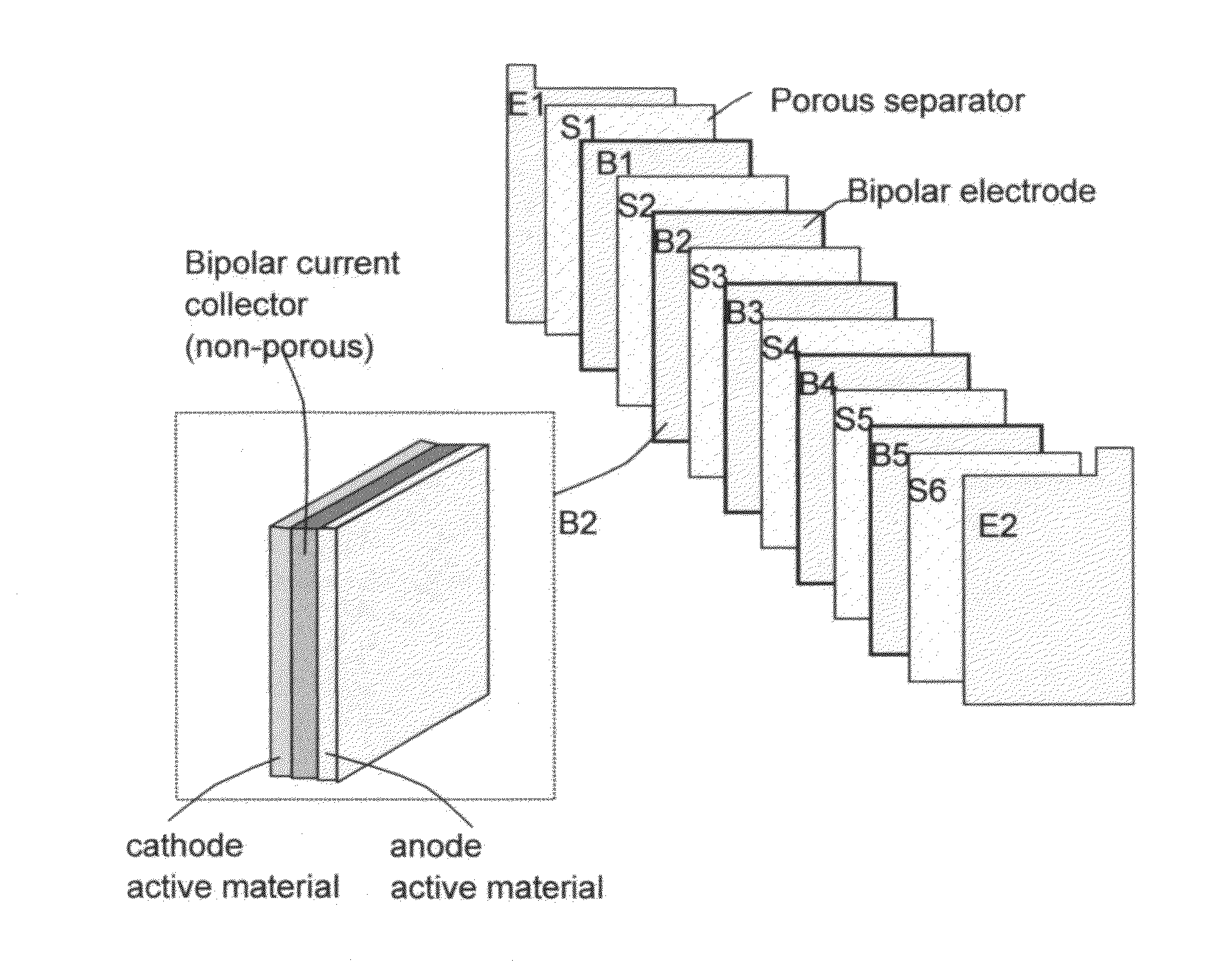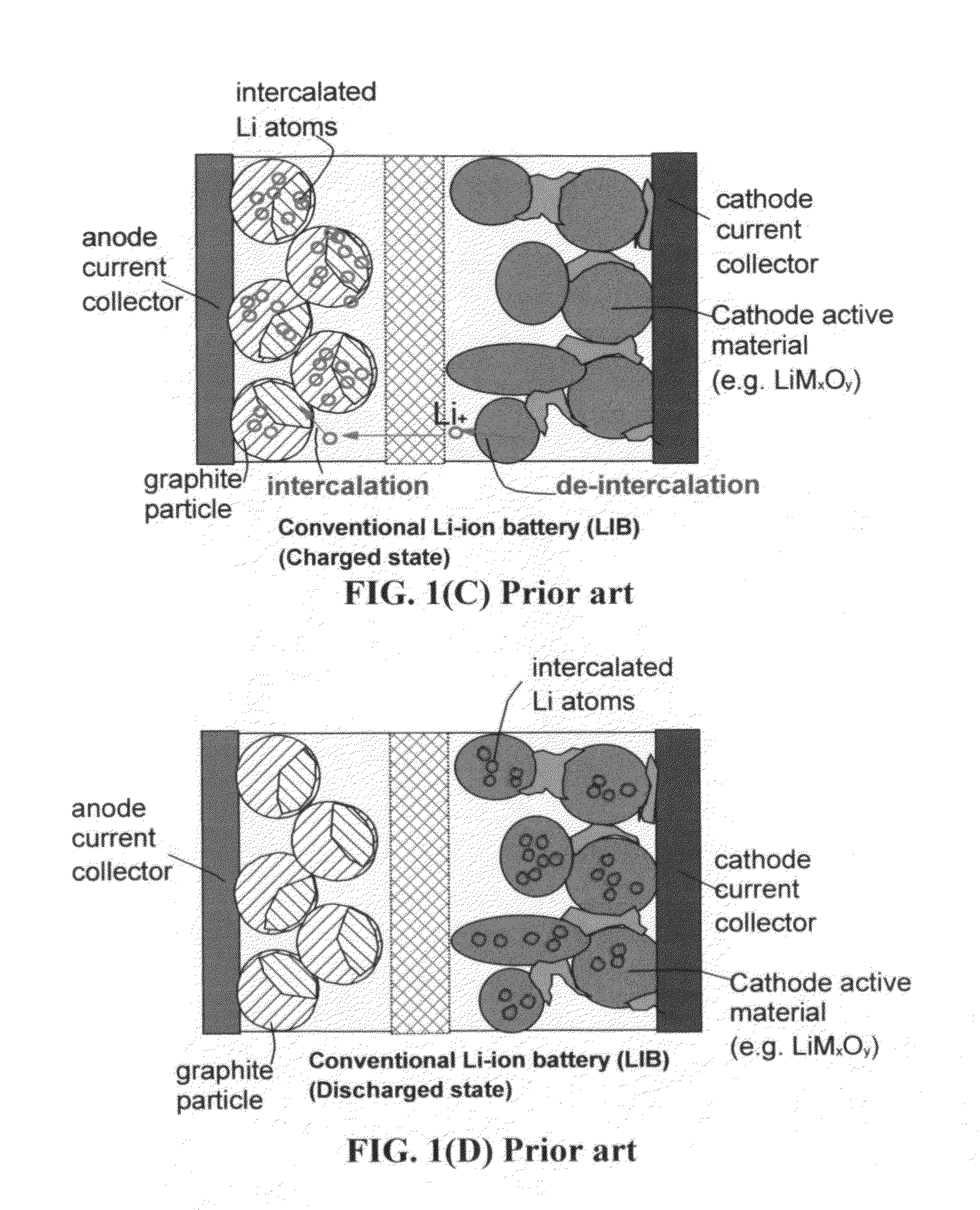Stacks of internally connected surface-mediated cells and methods of operating same
a surface-mediated cell, internal connection technology, applied in the direction of secondary cell details, cell components, electrochemical generators, etc., can solve the problems of low round-trip efficiency, extremely poor power density, and inability to reverse the charge reaction, and achieve high power density, fast discharging of the stack, and high power density
- Summary
- Abstract
- Description
- Claims
- Application Information
AI Technical Summary
Benefits of technology
Problems solved by technology
Method used
Image
Examples
example 1
Functionalized and Non-Functionalized Soft Carbon (One Type of Disordered Carbon), Soft Carbon-Based Super-Battery and Surface-Mediated Cells
[0220]Non-functionalized and functionalized soft carbon materials were prepared from a liquid crystalline aromatic resin. The resin was ground with a mortar, and calcined at 900° C. for 2 h in a N2 atmosphere to prepare the graphitizable carbon or soft carbon. The resulting soft carbon was mixed with small tablets of KOH (four-fold weight) in an alumina melting pot. Subsequently, the soft carbon containing KOH was heated at 750° C. for 2 h in N2. Upon cooling, the alkali-rich residual carbon was washed with hot water until the outlet water reached a pH value of 7. The resulting material is activated, but non-functionalized soft carbon.
[0221]Separately, some portion of the activated soft carbon was then immersed in a 90% H2O2-10% H2O solution at 45° C. for an oxidation treatment that lasted for 2 hours. Then, the resulting partially oxidized sof...
example 2
NGPs from Sulfuric Acid Intercalation and Exfoliation of MCMBs
[0232]MCMB 2528 microbeads (Osaka Gas Chemical Company, Japan) have a density of about 2.24 g / cm3; a median size of about 22.5 microns, and an inter-planar distance of about 0.336 nm. MCMB 2528 (10 grams) were intercalated with an acid solution (sulfuric acid, nitric acid, and potassium permanganate at a ratio of 4:1:0.05) for 24 hours. Upon completion of the reaction, the mixture was poured into deionized water and filtered. The intercalated MCMBs were repeatedly washed in a 5% solution of HCl to remove most of the sulphate ions. The sample was then washed repeatedly with deionized water until the pH of the filtrate was neutral. The slurry was dried and stored in a vacuum oven at 60° C. for 24 hours. The dried powder sample was placed in a quartz tube and inserted into a horizontal tube furnace pre-set at a desired temperature, 600° C. for 30 seconds to obtain exfoliated graphite. The exfoliated MCMB sample was subjected...
example 3
SMCs Based on Graphene Materials (NGPs) from Natural Graphite, Carbon Fibers, and Artificial Graphite and Based on Carbon Black (CB) and Treated CB
[0234]Oxidized NGP or graphene oxide (GO) was prepared with a modified Hummers' method that involved exposing the starting graphitic materials to a mixture of sulfuric acid, sodium nitrate, and potassium permanganate at a ratio of 4:1:0.1 for 72 hours. The resulting GO was then thoroughly rinsed with water to obtain GO suspension, which was followed by two different routes of material preparation. One route involved subjecting the GO suspension to ultrasonication to obtain isolated graphene oxide sheets suspended in water (for Cell-N). The other route involved spray-drying GO suspension to obtain graphite intercalation compound (GIC) or GO powder. The GIC or GO powder was then thermally exfoliated at 1,050° C. for 45 seconds to obtain exfoliated graphite or graphite worms (Cell-G). Exfoliated graphite worms from artificial graphite and ca...
PUM
 Login to View More
Login to View More Abstract
Description
Claims
Application Information
 Login to View More
Login to View More - R&D
- Intellectual Property
- Life Sciences
- Materials
- Tech Scout
- Unparalleled Data Quality
- Higher Quality Content
- 60% Fewer Hallucinations
Browse by: Latest US Patents, China's latest patents, Technical Efficacy Thesaurus, Application Domain, Technology Topic, Popular Technical Reports.
© 2025 PatSnap. All rights reserved.Legal|Privacy policy|Modern Slavery Act Transparency Statement|Sitemap|About US| Contact US: help@patsnap.com



